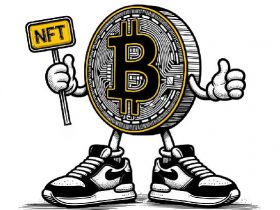Disclosure: The views and opinions expressed here belong solely to the author and do not represent the views and opinions of crypto.news’ editorial.
The age of direct-to-consumer is here in all aspects of the game. The $250 billion creator economy isn’t immune to this change either.
For long, traditional social media platforms have acted as gatekeepers of revenue flows, limiting ways in which creators, their followers, and unassuming advertisers engage with each other.
After seeing multiple web2-based iterations fail to balance these three pillars, it would seem the future is rightfully leaning toward web3 to democratize social media.
Empowering creators, users, and advertisers
According to a report from Mordor Intelligence, the impact of blockchain in the media, advertising, and entertainment market is expected to soar to $27.29 billion by 2029, at a CAGR of 78.49%. This transformation, which we are witnessing live, has been made possible with the emergence of defi integrations, which cut out the middleman and lay the groundwork for a new era of creativity, engagement, and trust.
From offering solutions to dated problems like digital piracy, skewed royalty distributions, and monopoly of user data, blockchain tech is now finding rampant use in redefining human interactions. It starts with empowering creators, without whom such platforms become just another community chat center.
By thinking beyond brand engagements, SocialFi platforms are helping create a model where loyal, paying communities sustain creative livelihoods. While existing solutions focus on only the creator, the other two legs of the system — users and advertisers — can no longer be ignored.
Here is where a tokenized ecosystem comes into play. By enabling creators to earn directly through audience engagement and rewarding every user for their digital footprint, SocialFi’s next phase should create mutually rewarding processes for everyone involved. This approach not only democratizes earnings to ensure creators are compensated fairly but also boosts user engagement by blending the interests of creators and their audiences.
Additionally, advertisers who are part of this ecosystem have greater control over their spending, getting to engage better with the entire user spectrum and thus projecting better returns on their investment.
NFTs for digital ownership
A few years ago, NFTs appeared with a bang but quickly sobered down as hype clouded their real-world applications in tokenizing digital assets. That being said, the sector continues to see healthy funding as investors bet on its applications in industries like art, real estate, photography, music, and social content — in essence, a connection with RWA.
We’re increasingly seeing that merely making content decentralized isn’t enough. There needs to be a way to stamp your IP on it, and monetize forever. In this regard, NFTs enable creators to have true ownership with the added prospects of merchandising and recurring revenue.
Another point to consider is the emergence of short-form visual content as the most popular form of content on the internet today. Despite their popularity, copyright violations and lack of creator credits disregard the efforts of digital participants. By offering genuine scope for visual content to be instantly converted into NFTs, SocialFi platforms can add a layer of transparency and monetization, previously untapped.
Despite such inherent potential, integrating blockchain into the media industry is not without its challenges. Issues like scalability and interoperability aren’t new, and much rides on emerging low-code solutions that enable developers to build scalable L2s, more effectively and at lower costs.
Several networks, like Sui, for example, provide a robust on-chain development environment and equip platforms with high throughput—a crucial factor in media applications that demand high transaction speeds for optimum user experience.
Building on-chain also ensures that decentralized and mainstream fintech tools can be plugged into a common ecosystem. Not to mention the preservation of intellectual property and thwarting cyber attacks by governing such platforms on-chain. All these factors are especially useful for seamless real-time payouts, including for micro-payments, which traditional fiat based transfers cannot service due to high transaction costs.
The complexity of web3 interfaces may be its biggest impediment for now, but with newer platforms incorporating the familiarity of web2 with the flexibility of defi, the opportunity to bridge two different worlds has never been more achievable.








Leave a Reply